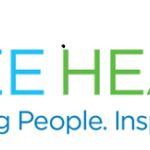

 As the nation starts to transform its approach to healthcare, there are clearly more questions than answers regarding what the future will bring. For the research community, the questions are no less compelling than they are for healthcare professionals, institutions, employers and prospective patients. Funding is the obvious engine that drives all research endeavors. Traditionally, funding for medical research comes from four sourcesthe drug and device industry, the NIH or other governmental agencies, private charitable sources and academic university budgets. In recent years, tightening reimbursements and uninsured care have placed increased strains on university hospital budgets, limiting the funding formally available to support the development of young researchers. The financial recession has certainly taken its toll on available charitable sources, although many foundations and organizations are in fact weathering the storm and will likely remain a limited but durable resource in the future. The two big “players” in the arena are industry and NIH. It is here that uncertainty, at least for now, reigns.
As the nation starts to transform its approach to healthcare, there are clearly more questions than answers regarding what the future will bring. For the research community, the questions are no less compelling than they are for healthcare professionals, institutions, employers and prospective patients. Funding is the obvious engine that drives all research endeavors. Traditionally, funding for medical research comes from four sourcesthe drug and device industry, the NIH or other governmental agencies, private charitable sources and academic university budgets. In recent years, tightening reimbursements and uninsured care have placed increased strains on university hospital budgets, limiting the funding formally available to support the development of young researchers. The financial recession has certainly taken its toll on available charitable sources, although many foundations and organizations are in fact weathering the storm and will likely remain a limited but durable resource in the future. The two big “players” in the arena are industry and NIH. It is here that uncertainty, at least for now, reigns.
In general, industry support is essential in order to bring promising ideas into clinical reality. Before introducing a new medication or device, it is quite obviously necessary to demonstrate to some reasonable degree that the medication/device is both safe and effective. Since no therapy is either 100% safe or 100% effective, the key is to define the knowable limits of safety and efficacy sufficient for an educated and reasonable judgment to be made regarding release and marketing (hopefully by the FDA). In order to accomplish this, testing must be completed in numerous stages, at first in the laboratory setting, then in an animal population, then in a very limited population of normal volunteers, then in a gradually expanding population with the condition which is being treated. All of this takes time and, you guessed it, dollars. It is not unusual for the total cost from drug discovery to clinical release to accumulate to the billion dollar range. The price of failure becomes challenging at best. It is for this reason that patent laws protect the drug manufacturers ability to recoup their investments (which must include not only the successes, but all the failed investments as well), so as to encourage future development. If new legislation restricts or taxes the drug and device industry in order to raise much needed funds (and we are not saying that it shouldnt), industry will likely respond by being more risk averse. If the bar for acceptance of new therapies is raised to demonstrate not only safety and efficacy, but also comparative advantage over currently available therapeutic options (a highly reasonable request), the incentive for industry-sponsored clinical research will be diminished. Perhaps a contraction and/or refocusing of this industry are not so bad in the big picture of how a country allocates its healthcare dollars. However, in the short run, there is likely to be a “cooling” of available funding for clinical research.
The real question that remains unanswered is the impact that health care reform will have on the NIH. Traditionally, the NIH has been the bastion of basic science research. Somewhat risk averse because it is distributing large sums of public money, the NIH process has nonetheless been remarkably free of political directive. Aside from the issue of embryonic stem cell research, NIH funding has largely been based on broad research strategies and rigorously evaluated by experts in the various fields being studied. What is currently being discussed with regard to comparative effectiveness research is a shift in this approach, from a research community-based approach to a governmental agency/policy approach to setting priorities and making funding decisions. (see VanLares article in the March 18, 2010 New England Journal of Medicine). This shift would signal a major shift in research funding, one of huge political significance. Not least amongst the major unsettled issues that such a change in direction would raise is who is left that is committed to medical research based upon scientific validity rather than commercial or political consequence? It is in just such a scenario that rare institutions such as the Florida Heart Research Institute, with its unbiased and independent commitment to stopping heart disease through research, education and prevention, take on added importance and significance.
Post Views: 709
 As the nation starts to transform its approach to healthcare, there are clearly more questions than answers regarding what the future will bring. For the research community, the questions are no less compelling than they are for healthcare professionals, institutions, employers and prospective patients. Funding is the obvious engine that drives all research endeavors. Traditionally, funding for medical research comes from four sourcesthe drug and device industry, the NIH or other governmental agencies, private charitable sources and academic university budgets. In recent years, tightening reimbursements and uninsured care have placed increased strains on university hospital budgets, limiting the funding formally available to support the development of young researchers. The financial recession has certainly taken its toll on available charitable sources, although many foundations and organizations are in fact weathering the storm and will likely remain a limited but durable resource in the future. The two big “players” in the arena are industry and NIH. It is here that uncertainty, at least for now, reigns.
As the nation starts to transform its approach to healthcare, there are clearly more questions than answers regarding what the future will bring. For the research community, the questions are no less compelling than they are for healthcare professionals, institutions, employers and prospective patients. Funding is the obvious engine that drives all research endeavors. Traditionally, funding for medical research comes from four sourcesthe drug and device industry, the NIH or other governmental agencies, private charitable sources and academic university budgets. In recent years, tightening reimbursements and uninsured care have placed increased strains on university hospital budgets, limiting the funding formally available to support the development of young researchers. The financial recession has certainly taken its toll on available charitable sources, although many foundations and organizations are in fact weathering the storm and will likely remain a limited but durable resource in the future. The two big “players” in the arena are industry and NIH. It is here that uncertainty, at least for now, reigns. 
























